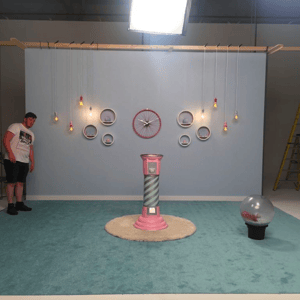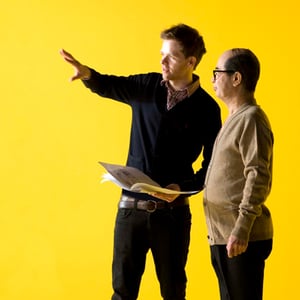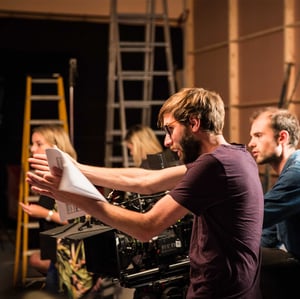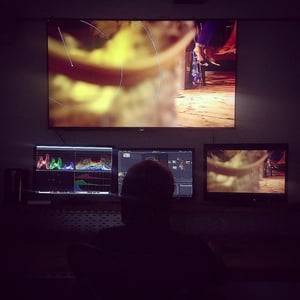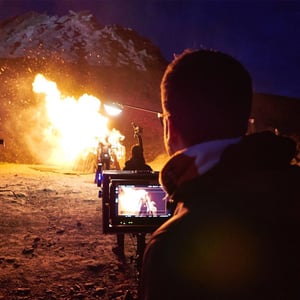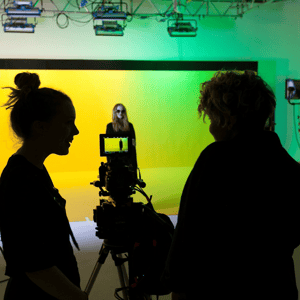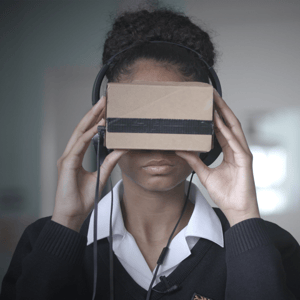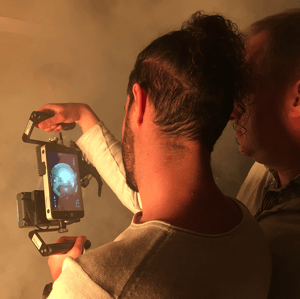We know that AV production & post-production can be intimidating for marketers who are new to the market. But whatever media environment you’re involved in, film can play a huge part!
That’s why we’ve pulled together this quick guide to AV production and post-production to explain some common terms used throughout the process.
Audio mix: Film production may lead with imagery, but don’t forget about the sound! Audio mixing is an essential part of the post-production process, ensuring that music, voices and sound effects are perfectly balanced.
Art Directors/Production Designers: I’m doing a disservice to both but in the crudest sense of the word, they are in charge of the set and props, be that the architect of a full on set design in studio or transforming an empty room into what looks like an old family room. Think of the set of Harry Potter and you’ll see how far you can go.
Branded content: Many brands are producing highly entertaining, engaging and informative video content to offer their audience genuine value without the usual ‘hard-sell’ approach. Done right, this can achieve strong reach, huge engagement and great conversion metrics.
Compositing: This is the process of taking multiple elements shot separately and combining them to appear as if they were all shot at the same time. Blending imagery, film and other elements in this way is a delicate process, as one wrong move can set off a chain reaction. Conversely, the smallest of changes can transform an asset – it’s all about the detail.
Director: Someone needs to be in charge of the look and feel of your campaign, and it’s important to find the perfect director for your project. The Gate works with a number of talented directors each with their own unique style – take a look.
Eyeline Match: If your content combines film and animation, it’s important that your actor’s view lines up with any animation they’re supposed to be interacting with. This needs to be planned in advance and dealt with on set. Don’t leave it to post-production teams to fix!
Editors: They are not just here to cut images together, they are storytellers and will analyse the footage into an assembly (rough cut) that will tell the story in the most efficient amount of frames possible and guide the viewer in the most aesthetically pleasing and effective way in the time you have. Always chosen to compliment their Director.
Frame rate: The number of frames in each second of film impacts the way content looks. One second of footage traditionally consists of 25 frames. However, a high frame rate can be used for slow motion effects, while some movies use 12 frames per second to evoke the feeling of their comic book inspirations.
Grading: During AV production, colours can be flat and often vary from location to location. Colour grading brings assets to life at the end of the filming process. These aren’t always big changes, but little tweaks can make a big difference and gives your film an overall premium, cohesive look.
Handles: Great AV production & post-production is all about keeping your options open. Extra material - or ‘handles’ - can be added on set during filming beyond the in and out points, allowing for editing at the beginning and end of the clip.
Intertitles: These titles appear on their own between sections of footage. With origins in silent movies, intertitles are now sometimes used for cinematic effect, with Quentin Tarantino numbering among the technique’s many fans.
Jump Cut: When content is cut so that actions don’t match up to the preceding shot, this can cause characters to ‘jump’. This technique is sometimes used to replicate the passing of time, but it needs to be done right, otherwise it risks looking like an amateur mistake.
Keyframe: These frames can be used to adjust various parameters in the video such as scale, rotation and brightness.
Location: Filming can take place just about anywhere, at any time, in any setting. We’ve worked in studios, on beaches, across cities – one lucky AV production team even tagged along on a family summer holiday for Eurocamp’s latest ad campaign! Wherever you’re shooting though, it’s important to select a location that best meets client requirements.
Lighting Cameraman: Otherwise known as your DOP (Director of Photography), this is the technical (genius/leader/wizardry/head) of each shot, bringing the Directors vision to life with their technical camera and lighting knowledge to ensure the image you’ve all talked about is made possible and realised on screen. They don’t point and shoot, they dissect each each shot in the same way as a photographer and every frame is considered.
Multi-platform campaign: A film might have several different assets for different platforms such as Facebook, Instagram, YouTube and broadcast. It’s important to plan your AV production and post-production processes accordingly, and ideally capture content in the right dimensions to start with!
Native advertising: Similar to branded content, native advertising is designed to promote a product or service, but in a way which seamlessly blends with the platform it’s placed on.
Out of home: This refers to any video advertising that appears on billboards or elsewhere in public. Why does this matter? This content will be viewed in very differently in contrast to content viewed on phones or laptops, so it’s worth considering this within AV production and post-production.
Post-production: Once an asset has been filmed, there’s plenty to do before your audience sees it. Post-production includes editing, colour grading, sound mixing and various other steps. Luckily, The Gate has post-production capacity in-house to take care of this for our clients.
Producers and Production Managers: Never the same, but work in conjunction. The Producer is the enabler that will help you find the right creative and technical talent specifically suited to you, your product and your creative and run the project from conception to on air delivery. The Production Manager will facilitate the technical elements, managing the crew and delivering it to a budget, advising of cost implications, technical issues and the best production route for your available budget.
Quality: Most modern screens are high definition, so content needs to be created with this in mind. Shooting in a high resolution helps to future proof your content and prevent it becoming outdated too quickly.
Rushes: An essential term within all AV production and post-production activities, this refers to unedited video files, straight from the camera raw and unedited.
Style frame: A single still image can help clients to decide on the final style of a shoot. This is similar to a mood board and takes the form of a mock-up of one frame.
Sound: There's a saying - "You only ever notice bad sound". Which is true. But GOOD sound design can take a film to a whole new level. It's always worth in investing in a proper sound recordist with kit on set rather than using in camera mics.
Timeline: Video clips, titles, logos and audio clips all appear in editing software as coloured blocks, which can be rearranged on the timeline.
Up-Conversion: This process converts standard definition video to a high definition format. While this may save budget on smaller projects, it doesn’t make for the best quality content in the long run, so we would always recommend shooting in HD.
Virtual Reality: This gives brands the ability to immerse viewers in an interactive world through a headset. VR is an emerging trend, but it’s growing fast.
White Balance: By adjusting digital cameras to read the brightest area of an image as pure white, AV production teams can ensure that colours are recorded properly. If footage isn’t white balanced during filming, you can expect a long and painful colour correction process.
X - GFX: Ok slightly cheating. This is world of it’s own from 2D to full on 3D motion graphics, they are the artists of the edit world. A good GFX Designer can turn your Times New Roman into a piece of art and taking it to that premium level.
We’ll be honest, we struggled with Y and Z! If you’re looking to work with an AV production & post-production agency that’s happy to shed the industry-speak, we can talk you through our much-perfected process which made it possible to help one client go from brief to TV commercial broadcast in just two days.
